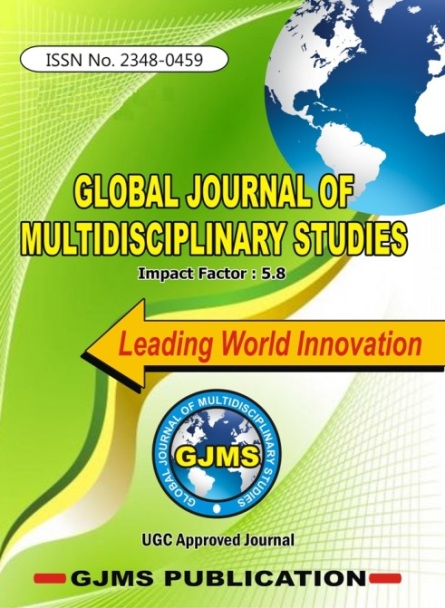CAN KERWAN RESERVOIR BE CONSIDERED AS A POTENTIAL SITE FOR CONSERVATION OF THREATENED FISH? CASE STUDY OF ITS PHYTOPLANKTONS
Abstract
The present study comprises analyses of biological parameters of Kerwan reservoir . In fact, this parameter is complementary to other physico and chemical parameters when projected together to present an integrated image of the reservoir in regard to its suitability for propagation and multiplication of threatened fish fauna mahseer. The worldfamous game fish Mahseer are declining in their numbers and sizes in different parts of India, due to indiscriminate fishing of brood stock and juveniles, fast environmental degradation of aquatic ecosystems, construction of dams, barrages, weirs, etc. under various river valley projects.The methodology adopted to conduct above mentioned study is as follows. Monthly samples of water were collected from the four sampling stations of kerwan reservoir for a period of eighteen months. The parameters were analyzed according to the Standard Methods of Golterman et al. (1978), Boyd (1979), NEERI (1986) and APHA (1995). During the period of study it was observed that the minimum number of chlorophyceae species recorded were 23 and maximum was 37 . Minimum number of species of bacillariophyceae was 10 maximum was 15 . Number of species of cyanophyceae recorded was 6, and was minimum and 9 species were recorded , which was maximum.Number of species of euglenophyceae ranged between 1 which was minimum and 3, which was maximum. The quantitative analysis reveals that the range of phytoplankton remained between 800 organisms/ltr. to 3050 organisms/ltr. As discussed by Welch (1952) lakes with high plankton abundance are known as eutrophic. The values of phytoplankton in Kerwan reservoir also indicate its eutrophic state, though to a lesser degree. Thus,it could be inferred by the observations and as it has been stated by several investigators the mahseer species has shown adaptability from riverine to lacustrine condition it can be concluded that this fish can be well protected in Kerwan reservoir if managed scientifically.References
APHA 1995. Standard methods for the examination of water and waste water. Published
jointly by American Public Health Association. American Water Works Association
and Water Pollution Control Federation, New York (19th Ed.).
Bisht, R.S. & Das, S.M. (1981). Observations on aquatic insects as food of fishes and the
predatory action of some aquatic insects on fish and fish food. J. Inland Fish. Soc., India,
Edmondson, W.T. (1959). Fresh water Biology. 2nd ed. New York, London, Johr Wiley
and Sons, 1-1248.
Jhingran, V.G. (1983). Fish and Fisheries of India, Hindustran Publishing Corporation I
pp. 1-603.
Mason, C.F. (1996). Biology of Fresh Water Pollution. Longman Group Limited,
London, pp. 20-283.
Needham,J.L. and Needham, P.R. (1962). A Guide to the Study of Fresh Water biology.
Holden Day Inc. San Francisco, pp. 108.
Oswald, W.J. and Gotass, H.B. (1957). Photosynthesis in sewage treatment. Trans.
ASCE 122 : 73 - 150.
Pennak,R.W. (1953). Freshwater invertebrates of the United States. The Ronald Press
Co., New York.
Rawson, D.S. (1956). Algal indicators of trophic lake types. Limnol. Oceanogr., 1 : 18-
Teilling, E. (1955). Some mesotrophic indicators. Vern. Int. Verein. Theor. Angeo.
Vincent,W.P. and Silvester, W.B. (1979). Growth of blue green algae in the Manukau
(New Zealand) oxidation ponds I. Growth potential of oxidation pond water and
comparative optima for blue green and green algal growth. Water Research, 13 : 711 0
Pergamon Press Ltd., Great Britain.
Ward, H.B. and Whipple, G.C. (1959). Fresh biology. John Wiley and Sons.
Welch, P.S. (1952). Limnology. 2nd Ed. McGraw Hill Book Co., New York, 1- 538.
Wetzel, R.G. and Likens, G.E. (1979). Limnological Analysis. W.B. Saunders Co.,
Downloads
Published
Issue
Section
License
Copyright Notice
Submission of an article implies that the work described has not been published previously (except in the form of an abstract or as part of a published lecture or academic thesis), that it is not under consideration for publication elsewhere, that its publication is approved by all authors and tacitly or explicitly by the responsible authorities where the work was carried out, and that, if accepted, will not be published elsewhere in the same form, in English or in any other language, without the written consent of the Publisher. The Editors reserve the right to edit or otherwise alter all contributions, but authors will receive proofs for approval before publication.
Copyrights for articles published in World Scholars journals are retained by the authors, with first publication rights granted to the journal. The journal/publisher is not responsible for subsequent uses of the work. It is the author's responsibility to bring an infringement action if so desired by the author.

